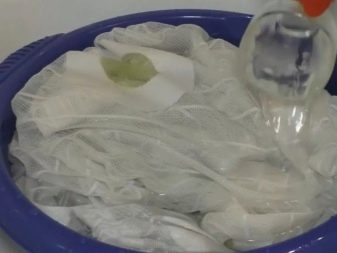What are mesh fabrics and where are they used?
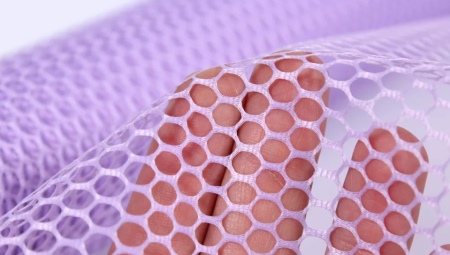
Mesh products have an attractive appearance, therefore, mesh fabric is in great demand among consumers. The versatile material looks great not only as an interior decor, but also as a decoration for various things. It makes beautiful clothes.
Peculiarities
The mesh fabric is characterized by through holes that have a regular geometric shape. The longitudinal and transverse threads are intertwined, creating, when joining or twisting, knots, between which empty spaces of different sizes remain on the canvas. The cells can be in the form of squares or hexagons that resemble honeycombs. Their parameters are reflected in transparency, air permeability, hygroscopicity, elasticity, density and stiffness of the canvas.
The special texture with neat holes gives the mesh items an airiness. The fabric is multifunctional. Textiles with a peculiar cellular structure have lightness, tendency to drapery, strength, abrasion resistance, wear resistance. Products tend not to retain moisture, dry quickly and easily give in to any processing.
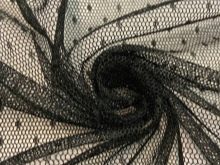
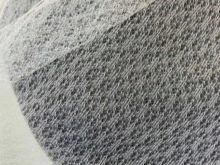
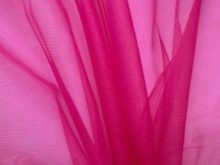
Most often, mesh fabric is made from natural fibers such as cotton, linen, wool. In addition, synthetic threads are used:
-
flexible and water-repellent polyamide;
-
durable, safe and reliable polyester;
-
excellent breathability and excellent stretch elastane;
-
with antistatic properties, hygroscopicity and silky sheen viscose.
However, the stiff mesh can irritate sensitive skin. In addition, there is an active perception of ultraviolet rays. The fabric is difficult to work with.
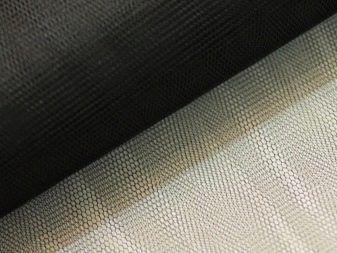

History
The technique of weaving fishing nets has been known since ancient times. They were made by hand. Over time, other methods of obtaining different types of meshes began to appear. For example, tulle has been known since 1832. His homeland is the United States. It was there that they came up with a light polyester canvas, consisting of small hexagons.
Tulle got its name from the city of the same name in France, where it was produced by local weavers back in the 15th century. There is a legend that the king fulfilled the desire of his bride to hide her face with a transparent material through which you can see everything. The canvas gained popularity in the 19th century after its massive use as curtains for windows, protecting from prying eyes, but at the same time allowing you to see events and objects from the outside. Now it is customary to combine a smooth or patterned product with heavy curtains.

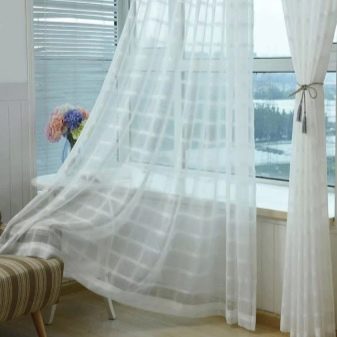
Views
The fabric can have different cell sizes and configurations, differ in density and thickness. There is a material with a printed pattern or embroidery. Mesh fabric goes well with sequins and bugles. Black large mesh with rhinestones is a beautiful applique for a dress. It is well suited for sewing tights, veils and other items of women's dress. Decorative elements on a coarse mesh look amazing.
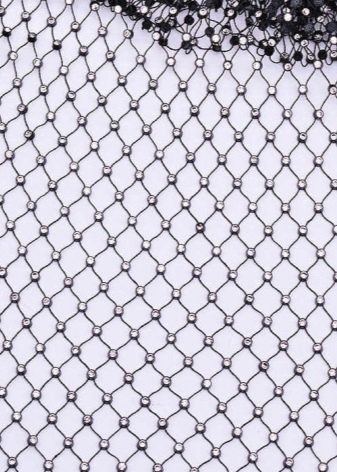
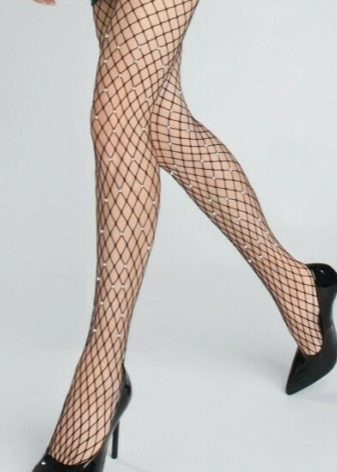
Transparent cotton fabric with the addition of silk and polyester is produced on special tulle machines. Tulle is most often used to make curtains for windows. Lingerie and women's outfits are trimmed with it. White tulle fabric quickly becomes dusty and dirty. For this reason, curtains require frequent washings.
Mesh neoprene is made from chloroprene rubber. The elastic material keeps warmth remarkably, not allowing air masses and moisture to pass through. Dyed foam rubber textiles are used to decorate fashionable blouses and dresses. In addition, wetsuits and swimwear are made from it. Sometimes they are glued to another canvas from the front side.
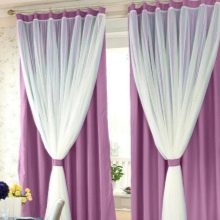
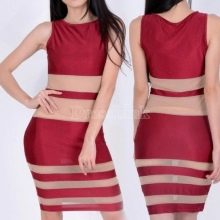
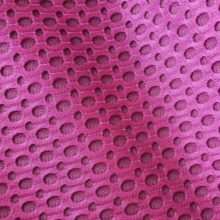
Camouflage netting is often used as a camouflage material for hunting and fishing. It finds its application in summer cottages, in country houses and for covering gazebos.


The false mesh fabric is characterized by a blind mesh system. Non-woven synthetic knitwear has medium softness, provides high-quality air exchange, stops moisture penetration, prevents the development of pathogenic bacteria and the appearance of sweat odor. Polyester jersey is great for T-shirts and other sports equipment. Elastic clothing stretches well, does not wrinkle, and has a high level of resistance to mechanical stress.
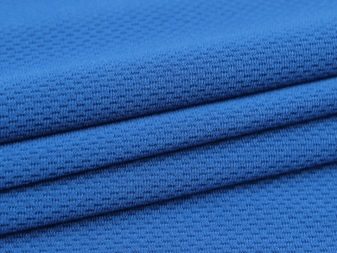
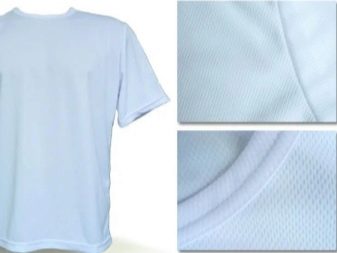
Consider a description of the most popular perforated fabrics.
Soft
The addition of viscose and elastane gives the garments softness and elasticity. The soft cloth is used for sewing clothes: skirts, blouses, trousers, festive dresses, underwear. The finished product fits the body well, does not hinder human movements, does not cause skin irritation. Such fabric lends itself to drapery.
One of the varieties of soft fabric is guipure, in which convex segments of the ornament resembling embroidery are united by a thin mesh. The material is practical. It weighs little, passes air masses well, retains its shape after repeated washings, does not cause allergies. The disadvantages include the difficulty of staining. In addition, the material tends to tear frequently. Puffs are easily formed on it. Gloves, underwear, various inserts for accessories and clothes are made of fabric.


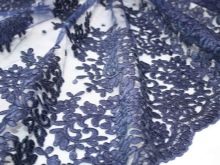
Hard
The addition of polyester or polyamide gives the textiles extra rigidity. Ready-made things keep their shape perfectly. Rigid mesh fabric is perfect for making linings and pockets in luggage bags, backpacks, for decorating decorative structures.It is suitable for constructing technical frames, fixing various plants.
Fatin is one of the most common varieties of the hard option. It has high wear resistance, rigidity and elasticity. The material is made of nylon thread, so things created from a fine mesh do not wrinkle, do not get dirty or torn. The canvas drapes wonderfully into folds and flounces. The fabric is great for sewing wedding dresses, party dresses and ballet skirts. In the manufacture of such clothes, material with sequins is often used. Various embroideries and appliques look good on finished products.
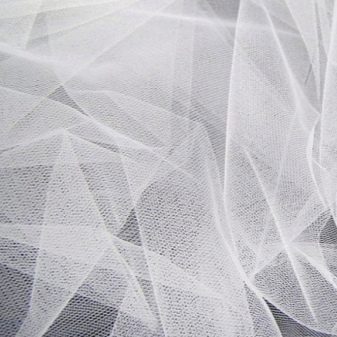
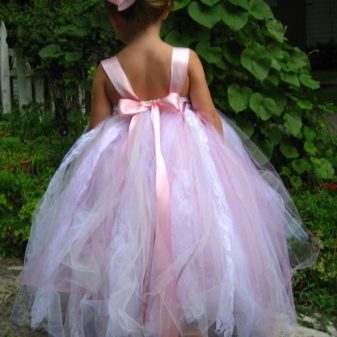
Mesh clothing is light and fluffy. The canvas is often used to add extra volume to products. The advantages of the fabric include multilayer, which helps to retain heat. Each layer is good for air and water permeability. The rigid version of the fabric is used for the manufacture of wedding veils, gloves with lace, for decorating handbags.
The disadvantage is the easy flammability of the product, rapid melting under the influence of flame. For this reason, it is not recommended to make children's things from this material. Multi-colored textiles are often used for interior decoration in banquet and wedding halls. Artificial flowers are most often made from it.
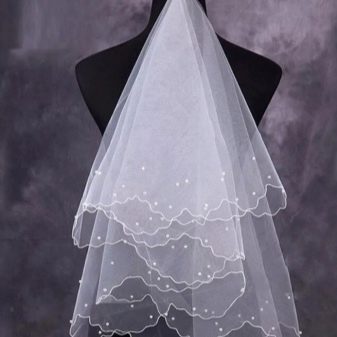
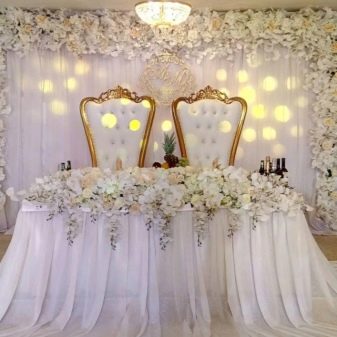
Stretch
There is a very durable type of mesh made of artificial yarn with the addition of elastane. Finished products are characterized by wear resistance and durability. Underwear and shapewear are sewn from transparent fabric. The cellular material is used to make inserts for tight-fitting dresses and blouses. A light mesh of flesh tones creates the appearance of a lack of fabric, which is why it is included in various dance costumes. Actors, singers and dancers often decorate their outfits with this mesh.
Stretch polka dots are in trend. Clothes decorated with similar inserts look very impressive.
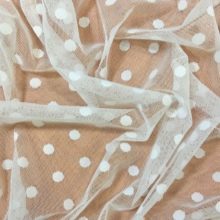
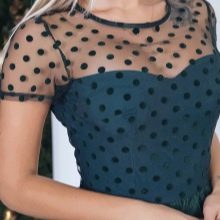
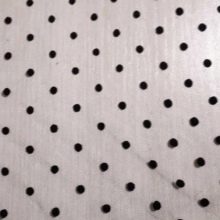
Applications
The mesh fabric is multifunctional. Most often, the mesh is used as an independent material for making a beautiful dress, costume or decor. Sometimes the net can serve as a canvas for embroidery and lace weaving. The mesh material is used to create collars and cuffs. Hole products are suitable for everyday use and for special occasions.
Mesh fabric is great for sewing tablecloths, bedspreads, curtains and curtains. Nylon mesh curtains are lightweight. They perfectly let in sunlight, are perfectly washed and draped.
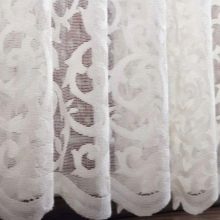

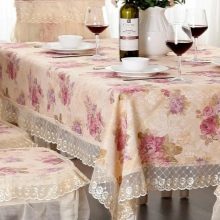
From the porous canvas, wonderful lightweight canopies and other protective covers against insects are obtained. The translucent fabric is used to make mosquito nets that prevent flies, mosquitoes, gadflies, mosquitoes and midges from entering the room.
The mesh is used to decorate the interior. It makes elegant tablecloths, beautiful covers for armchairs and sofas. Floral bouquets and gift wraps are decorated with mesh patches. Camping equipment and interior elements for bags and backpacks are often made from perforated fabric.
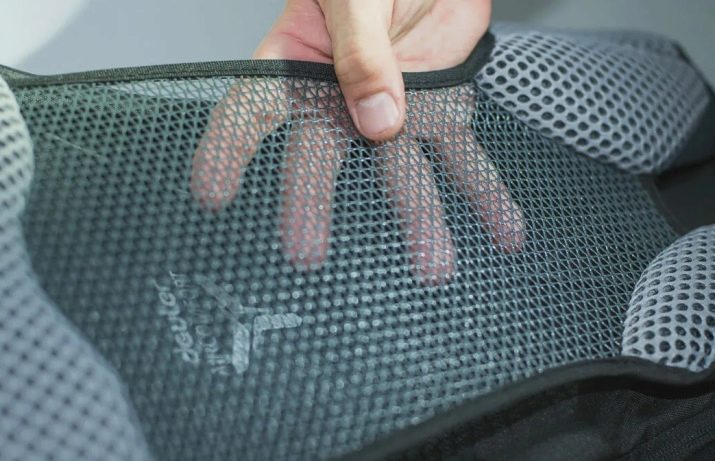
Soft mesh fabric is used for sewing women's clothes. The elastic material makes great shapewear. Dance, carnival, stage costumes and smart blouses are also often made from mesh.
Dense fabric with small cells is used for the manufacture of lining material for wedding, evening and festive dresses. It gives pomp and elegance to skirts. The fabric is used for sewing petticoats and various linings that save heat well.
The false mesh with excellent hygienic properties is ideal for sewing sportswear. Any print can be easily applied to it. Summer T-shirts and T-shirts, beach accessories are sewn from the fabric.
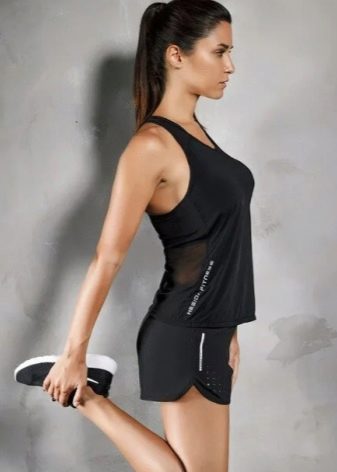
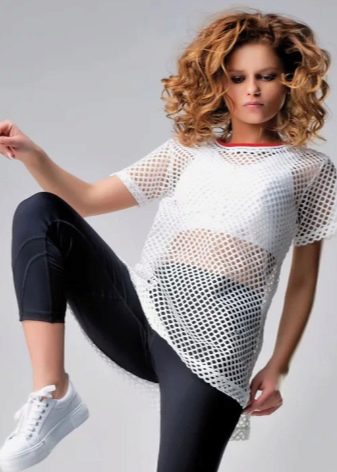
Care rules
Mesh clothing should be stored folded on a shelf or placed on a hanger. The dress must be protected with a cover.
Medium-hard, dense mesh textiles do not require any special maintenance. It can be machine washed, wrung out and dried in any way. Items decorated with decorative elements only need to be washed by hand in warm water.
Items made from fine mesh fabrics should be washed separately from items sewn from other fabrics. It is not allowed to wash laundry of different colors together. The temperature regime should be from 30 to 40 degrees. Use a mild laundry gel or any other liquid detergent. Clothes must not be twisted or wrung out. It is allowed to spin only mesh decor combined with another cloth.
Rinse until clear water appears. After that, the thing must be thoroughly shaken and dried flat at room temperature. Clothes are ironed from the wrong side without steaming. It is not recommended to clean the mesh with a brush.
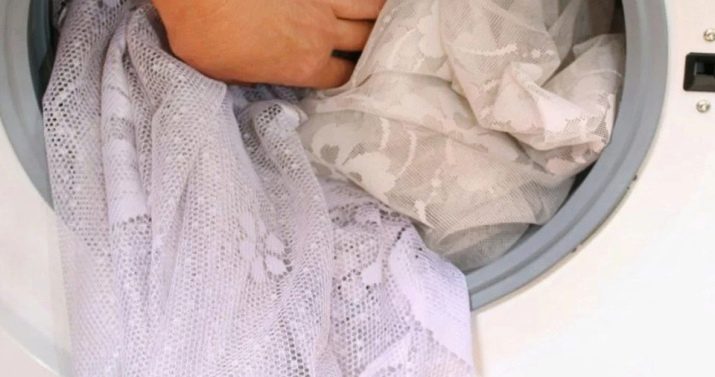
It is advisable to wash the guipure by hand. Machine wash will result in drum sticks. Before sending the guipure item to the washing machine, you must protect it with a special cover. Do not use detergents containing chlorine. Otherwise, product deformation is inevitable.
Tulle curtains must be thoroughly shaken off dust before washing. Otherwise, the canvas will turn gray or yellow. If, nevertheless, such a nuisance occurs, it is necessary to place the thing in warm water with table salt and leave it there overnight. Tulle textiles are afraid of high temperatures, so they begin to shrink and deform. It is best to dry curtains directly on the eaves. No ironing required.
To preserve the original volume of things sewn from a rigid mesh, you need to manually straighten all the folds and flounces on high-hanging clothes. Sharp creases can be removed with a steamer. When ironing, use the "silk" or "synthetics" mode. In this case, the thing must be moistened.
The mesh material is best ironed using multi-layer gauze.
